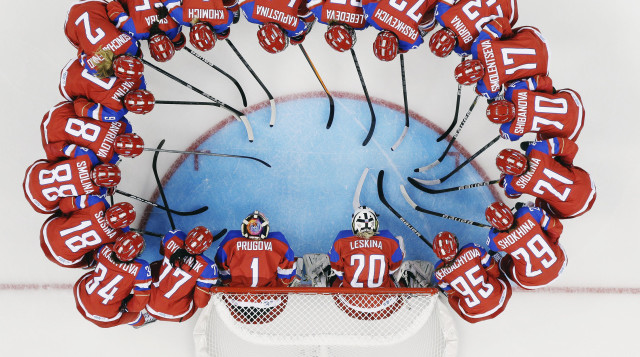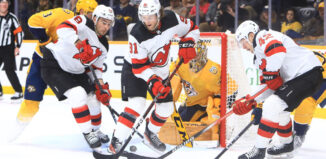The Trouble with the RWL, or: Why The Import Rule Matters
(Photo: zastavki.com)
Earlier this week, it was announced that Russia is forming a new women’s ice hockey league. Ten women-only Russian teams are going to form what Alexander Medvedev (president of the KHL) called “KHL-girls”. Unlike the KHL, which now includes teams from seven other European countries, the RWL (Russian Women League) will contain teams only based in Russian cities (although there are plans to expand to Belarus and Kazakhstan as early as 2015).
Which is awesome! After the huge uptick in visibility for women’s hockey after the behemoth Canada/USA gold medal game at Sochi, and news of expanding the CWHL, women’s hockey is getting bigger and better, and a brand new women’s league in one of the biggest hockey markets in the world can only be a good thing.
But here’s the kicker:
Only three foreign players will be allowed on the ice per team, and there are motions to ban non-Russian goaltenders from the 2015-2016 season onward. How Russian, right? Excluding other nations who don’t have the same privilege, who don’t have the funds or the population density to have their own women’s league. That can’t be good for women’s hockey as a whole, and the league will suffer as a result.
Except the import rule is an excellent rule, and here’s why:
If the RWL doesn’t have foreign players to rely on, then where do they turn? To the women hockey players in their own country. The import rule will force growth in the youth leagues, and there will be more girls learning to play hockey in Russia than ever before. Of the top ten men’s ice hockey leagues in Europe, only the Swedish Hockey League has no import rule, and while no leagues are quite as low as the proposed three non-Russian players per of the RWL, the numbers really speak for themselves. To grow the sport for adults, you have to create room for the kids.
An excellent example of what happens otherwise is the EIHL (Elite Ice Hockey League) in Great Britain. They have an import rule, but they allow up to eleven players per team. That’s over half the roster, in most cases, or one hundred and ten import players out of two hundred, and next year (for the 2014-15 season, it’s increasing to twelve). If 55% of your league is populated by foreign players, where do your youth players go? There isn’t a single British player in the KHL or the NHL, or even the AHL.
Some people argue that it’s the other way around, that the reason there have to be so many imported players is because of the lack of youth players. However, speaking as someone who’s hometown team folded (the Newcastle Vipers, in 2011) because of a lack of funds (which stems from a lack of interest; people aren’t willing to pay for a sport/team they don’t care about) it’s obvious that the problem starts in the pro league, and trickles down to the youth league. It seems to me that the way to get the country to care about the sport (and to get kids interested in the sport) is to fund the youth leagues and to put a stricter limit on the number of imported players you’re allowed to dress for each game.
Women’s hockey is still in it’s infancy, and putting limits on such a young league at first looks like a terrible idea, but by allowing these leagues to exist in a bubble, I believe that in the long run, we’ll see the kind of youth depth in the women’s game that we see in the men’s in North America, and then maybe we can think about expanding the leagues out to smaller markets in Western Europe.















Excellent and to-the-point article explaining the details with Russia’s new league. Excited to see more articles about women in hockey.